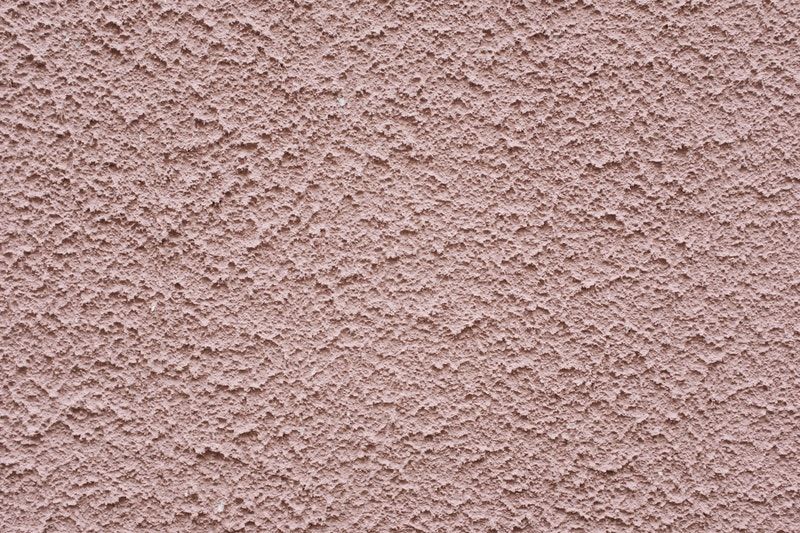There are several different types of finishes you can incorporate into your home, and one of the most popular is stucco. Stucco is an easy, low-maintenance way to add a textured look to your walls, ceilings, and the exterior of your home. However, like the rest of your home, it will show its age after some time.
Painting your stucco is a great way to freshen up the look of your home, but it’s really important that you use the right tools when working with it. This article will help you find the best brushes for stucco by covering the following:
- 10 best paintbrushes for stucco
- What’s the best type of brush for stucco
- Best way to paint stucco: brush, roller, or spray
- Best way to paint stucco without marks
Before we get into the best way to paint stucco, let’s dive into the best paintbrushes for stucco. If you also want to paint concrete, check out the best paintbrushes for concrete.
10 best paintbrushes for stucco
If you want your freshly painted stucco to look amazing, you need to make sure you’re using the best paint tools available. Here are our recommendations for the best paintbrushes for stucco.
1. DQB Industries Masonry Brush
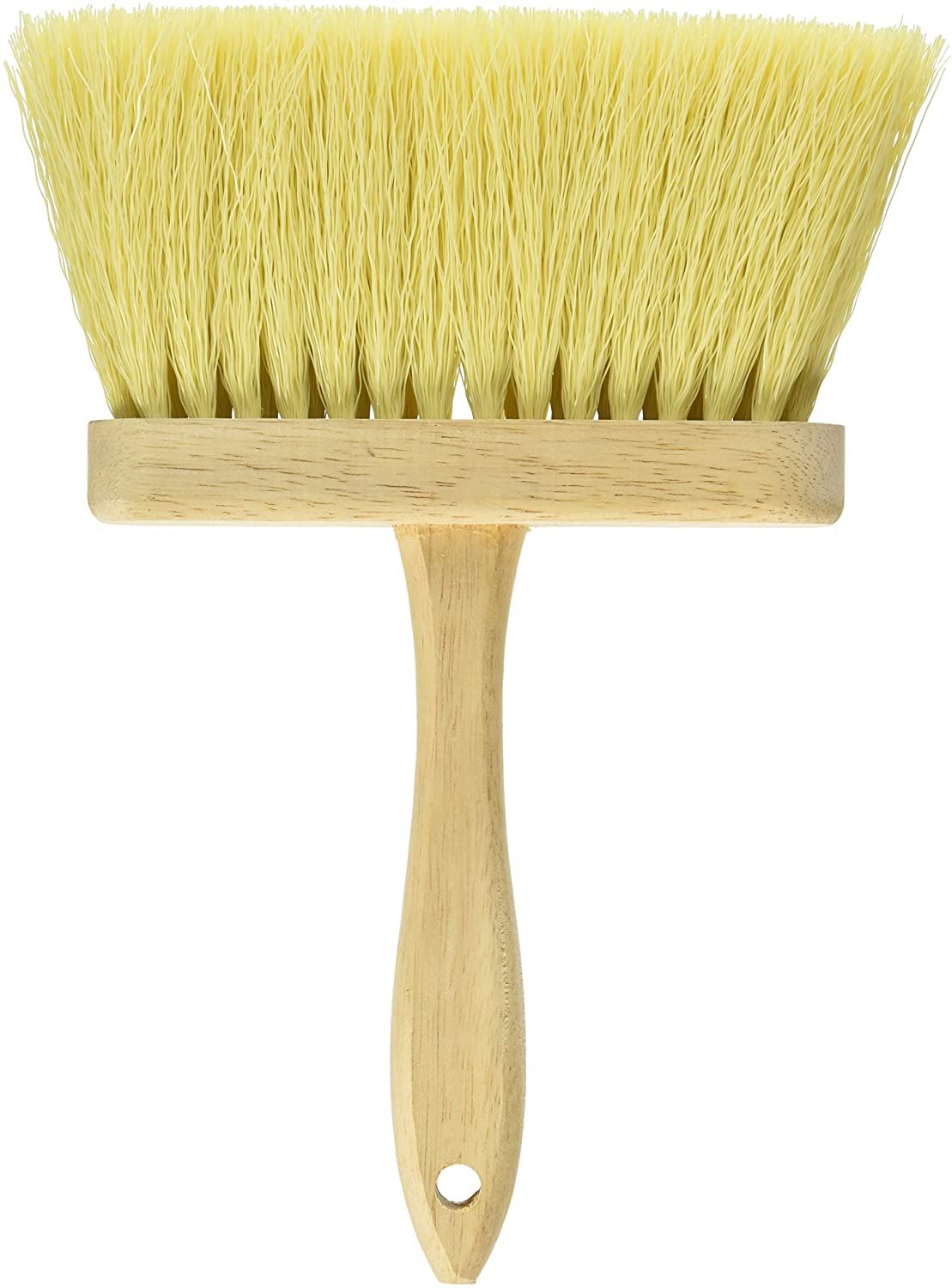
Image Credit: Amazon.ca
Type: Brush
Quantity: 1
Size: 6.5-inch
Material: Polystyrene
Best Feature: Lightweight
The DQB Industries Masonry Brush is a great option for ensuring you get full coverage over your stucco. The thick bristles are made of polystyrene, which helps maneuver your paint into all the crevices that your roller might have initially missed. It's also lightweight, helping you stay comfortable and allowing you to keep painting longer.
2. Wooster Lambswool/100 Roller Cover

Image Credit: Amazon.ca
Type: Roller
Quantity: 1
Size: ¾-inch nap, 9-inch length
Material: Lambswool
Best Feature: Quality
To paint over rough stucco, you need the Wooster Lambswool/100 Roller Cover. This roller cover is made of 100% lambswool, which is perfect for getting consistent coverage over lots of texture. It's well-made and can be used to apply a variety of paints and materials.
3. Graco Magnum X7 Cart Airless Paint Sprayer

Image Credit: Amazon.ca
Type: Spray
Quantity: 1
Size: 11.8 kg
Best Feature: Controllability
If you want a sprayer with your perfect level of paint flow, check out the Graco Magnum X7 Cart Airless Paint Sprayer. This sprayer allows you to easily adjust the pressure to get the paint flow that's perfect for your stucco. It's easier to move from one place to another, and it allows you to spray paint directly from the bucket.
4. Kraft Tool Stucco Dash Brush
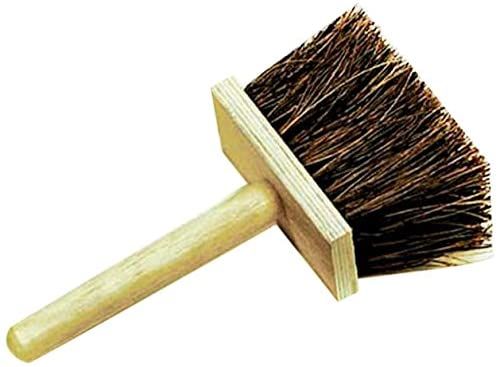
Image Credit: Amazon.ca
Type: Brush
Quantity: 1
Size: 5-inch
Material: Bassine
Best Feature: Durability
For a high-quality brush that makes creating stucco easy, check out the Kraft Tool Stucco Dash Brush. The bassine bristles are really durable and help create an ideal amount of texture quickly. It's also easy to keep clean.
5. Purdy Roadrunner Roller Cover

Image Credit: Amazon.ca
Type: Roller
Quantity: 1
Size: 1-inch nap, 9-inch length
Material: Lambswool-polyester blend
Best Feature: Versatility
The Purdy Roadrunner Roller Cover is ideal for the roughest stucco. Its lambswool and polyester blend makes it super durable and helps it hold and release paint well. It works with all latex and oil-based paint and stains and is approved for exterior use.
6. HomeRight Power-Flo Pro Airless Paint Sprayer
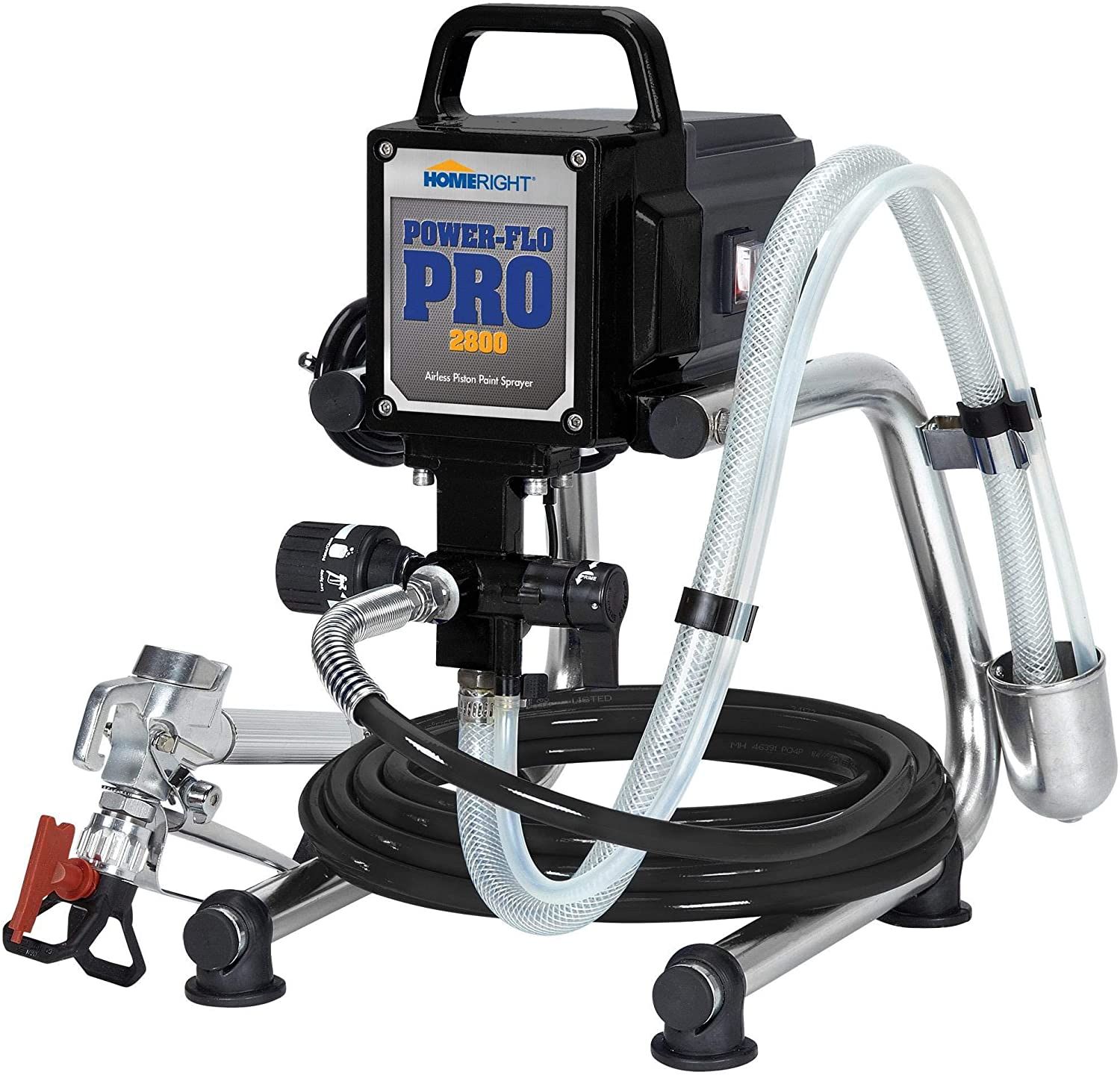
Image Credit: Amazon.ca
Type: Spray
Quantity: 1
Size: 6.8 kg
Best Feature: Easy to move
For larger projects, the HomeRight Power-Flo Pro Airless Paint Sprayer is a great option. It has a powerful motor and customizable spray patterns to give you an ideal paint flow. It's easy to maneuver and is highly recommended for first-timers.
7. Wooster Shortcut Angle Sash Paintbrush
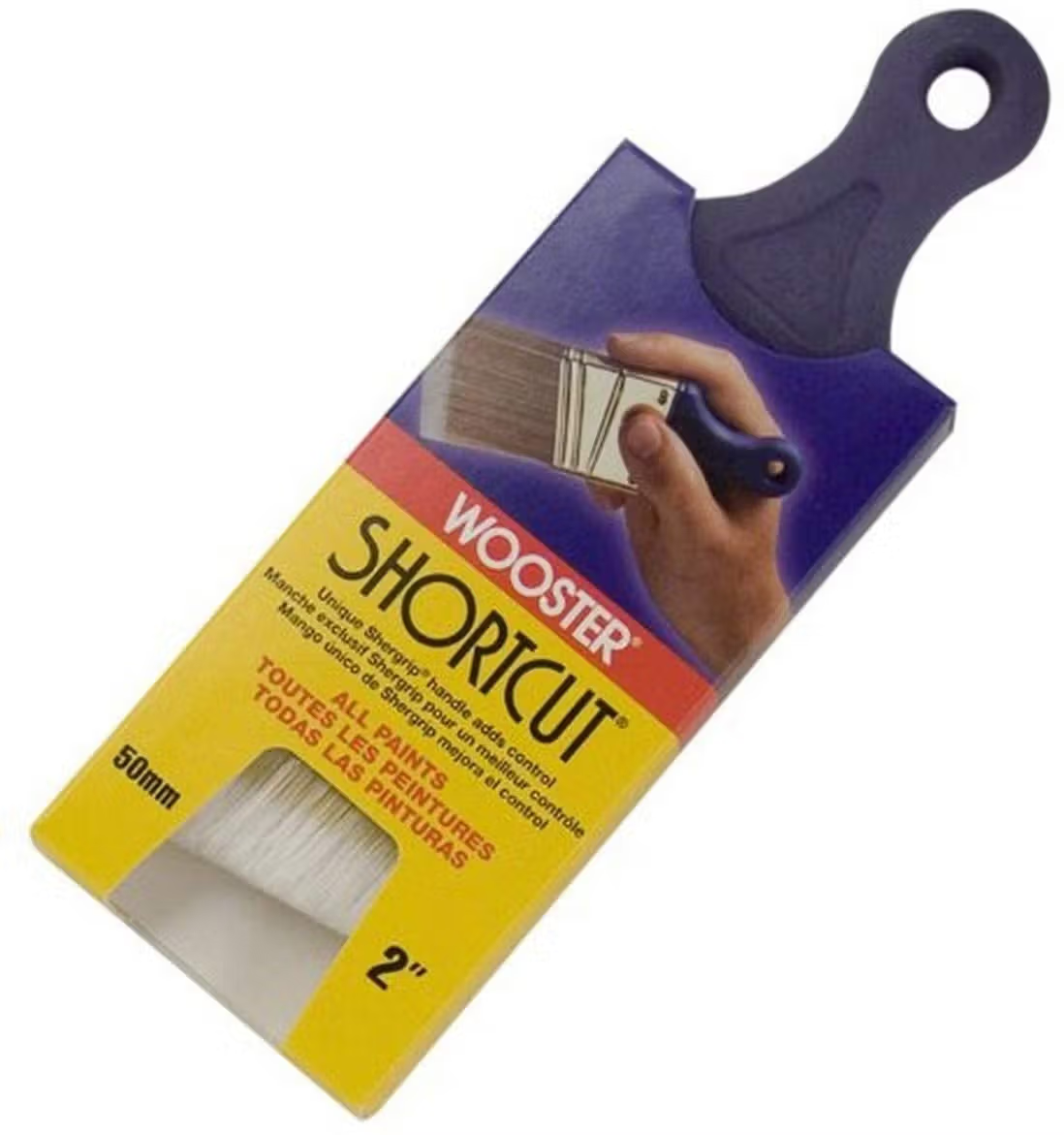
Image Credit: Amazon.ca
Type: Brush
Quantity: 1
Size: 2-inch
Material: Nylon-Polyester
Best Feature: Comfortable handle
If you're painting a surface in its entirety, you'll need the Wooster Shortcut Angle Sash Paintbrush for cutting in. This brush has high-quality angled bristles that help you apply smooth, straight lines. It will also keep you painting longer with its short, flexible handle.
8. Purdy Ultra Finish Roller Cover

Image Credit: Amazon.ca
Type: Roller
Quantity: 1
Size: ½-inch nap, 9-inch length
Material: Microfiber
Best Feature: Coverage
For those painting semi-smooth stucco, opt for the Purdy Ultra Finish Roller Cover. This roller cover is designed for interior use with latex and oil paints to give your project even coverage. It's made of quality microfiber that will keep your paint free of lint.
9. Titan Tool ControlMax High Efficiency Airless Paint Sprayer
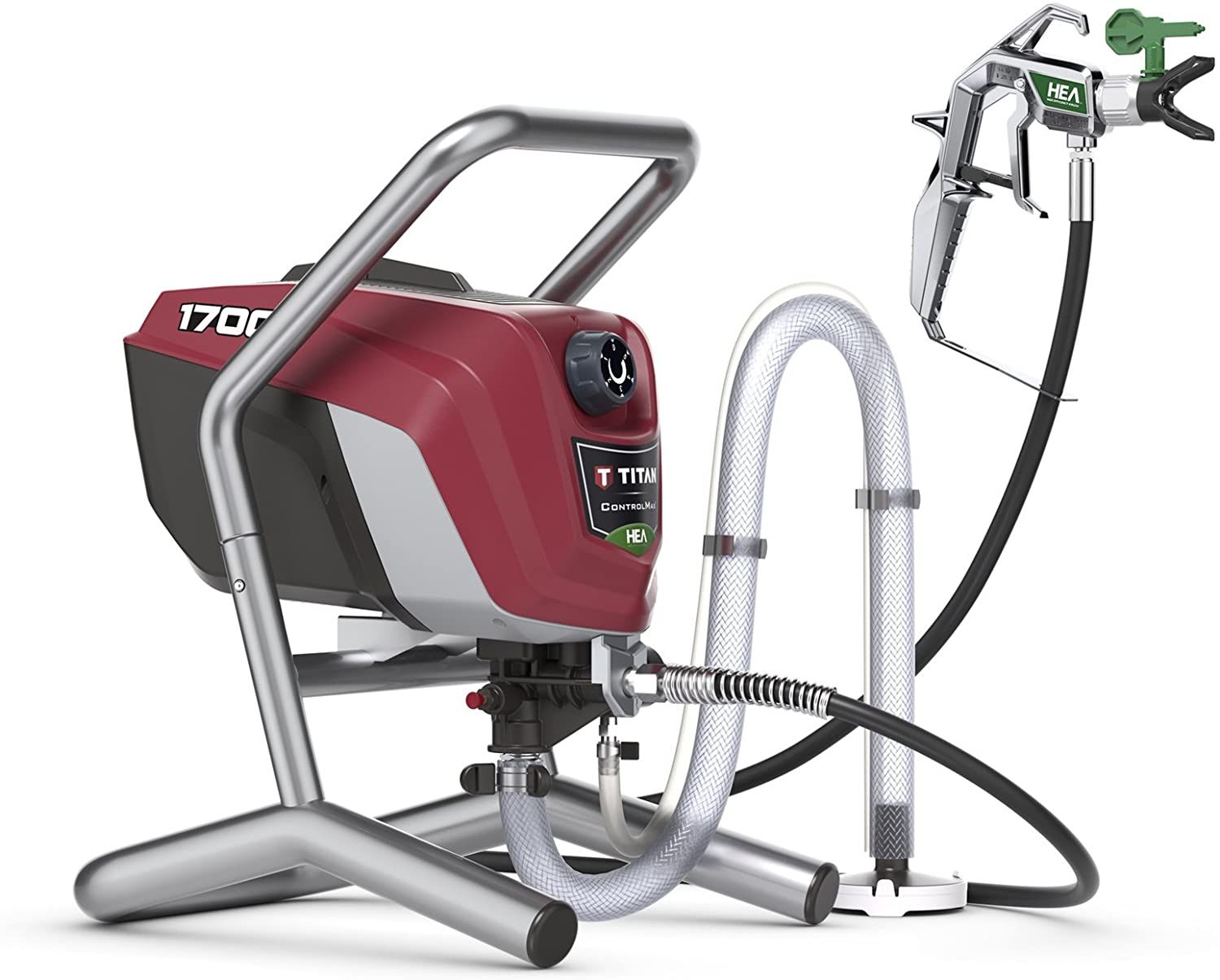
Image Credit: Amazon.ca
Type: Spray
Quantity: 1
Size: 8.8 kg
Best Feature: Consistency
The Titan Tool ControlMax High Efficiency Airless Paint Sprayer is great for anyone looking for efficiency. The sprayer's technology is designed to help limit overspray and allow for more controllability and consistency. It works well with a variety of paints and stains on various large projects.
10. Bon Plastic Bristle Stucco Dash Brush

Image Credit: Amazon.ca
Type: Brush
Quantity: 1
Size: 6-inch
Material: Plastic
Best Feature: Application
Another great option for creating texture is the Bon Plastic Bristle Stucco Brush. A little goes a long way with this brush, since it allows you to create texture with the lightest of pressure. It's made of high-quality materials and is great for patchwork.
What’s the best type of brush for stucco
When selecting a brush for painting stucco, different factors will impact the quality of your work. Here are the different brush types you’re likely to encounter when working with stucco.
What’s the best brush material for stucco?
The material of your brush will impact how well your brush can apply paint to the surface. These are the best materials for working with stucco:
- Lambswool: Works best with very rough stucco.
- Polyester: Maintains stiffness well. Can be blended with lambswool or other synthetic materials.
- Other synthetic materials: Nylon, microfiber, polystyrene, and more give bristles durability and other features to help apply paint smoothly.
What’s the best brush size for stucco?
Different sized brushes work best with different projects to help make the best use of your time and keep a steady hand. Below are the brush sizes best suited for stucco.
- 2-inch to 3-inch brush: Ideal brush size for cutting-in the edges of walls and ceilings.
- 5-inch to 6.5-inch brush: Best paintbrush size for painting large surfaces.
- 9-inch roller length: Most ideal size for the average wall or ceiling.
- ½-inch roller nap: Intended for lightly textured to medium textured stucco.
- ¾-inch roller nap: Best choice for medium to rough textured stucco.
- 1-inch roller nap: Ideal choice for the roughest stucco.
What’s the best paintbrush style for stucco?
When creating and painting stucco, there’s only a few different brush styles you’ll need to choose from. Here are the best brush styles for working with stucco?
- Angle Sash: Slanted bristles that are most efficient for cutting-in.
- Masonry: Ideal for working paint into stucco after it’s applied with a roller.
- Stucco Dash: Best for creating stucco texture using plaster and other texture material.
What’s the best paintbrush end type for stucco?
The ends of your brush’s bristles can also impact the way paint is applied. Here are the best end styles for working with stucco:
- Angled: Bristles are cut on a slant for painting thinner surfaces and cutting-in.
- Square trim: Bristles have a square cut for applying paint to flat surfaces.
- Round-ended rollers: Roller covers with rounded ends to prevent overlapping lines.
Best way to paint stucco: brush, roller, or spray
The best way to paint stucco is to use both paintbrushes and a paint roller. You should start by using an angle sash brush to cut in the edges of your walls, ceiling, or whatever surface you’re working on. Next, you can coat the main surface of your stucco with a roller brush in order to speed up the process and see beautiful, even coverage. With some stucco, it can be difficult to fill the entire surface, so you can use a masonry brush to fill everything in while the paint is still wet.
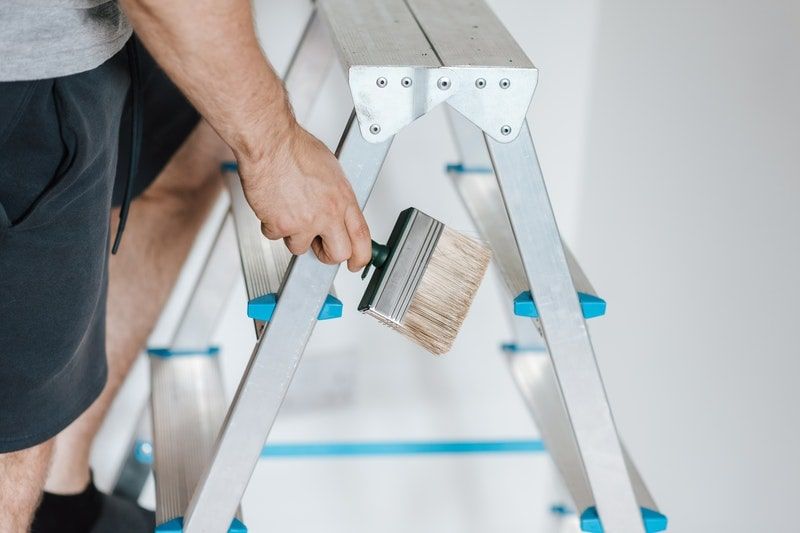
You can also use an airless paint sprayer for the entirety of the wall for an even faster application. However, be aware that sprayers cost more and can be a bit messy. For creating stucco, a stucco dash brush is your best choice.
Choose a brush if…
- You’re cutting in the surface.
- You want to fill in any missed spaces.
- You want to paint the entire surface with a steady hand.
Choose a roller if…
- You want to speed up the process.
- You’re working with a large surface.
- You want even coverage.
Choose a spray if…
- You want to paint as quickly as possible.
- You have the money to spend.
- You have a lot of large projects to complete.
Best way to paint stucco without marks
If you’re spending time painting your stucco, you’ll want to make sure your efforts are worthwhile. Here are tips on how to paint stucco without leaving marks behind:
- Check the weather - If you’re working with exterior stucco, check the weather forecast to avoid working in rain or humidity.
- Protect nearby surfaces - Use painter’s tape and sheets to protect all nearby areas, so you can focus entirely on what you’re painting.
- Repair any cracks or damage - To avoid ruining your work, caulk any cracks and reapply any stucco to damaged areas before painting.
- Clean the surface - Spray or wipe down the area with water to remove any dirt or debris that could get stuck in your paint.
- Apply a primer - Consider applying a primer that is compatible with your stucco to help with the application and final appearance of your paint.
- Use only what you need - Dip your brush’s bristles only ⅓ of the way into the paint and use a roller trap or screen for paint rollers to remove excess paint from your brushes. Too much paint could cause blotches, dripping, and uneven coverage.
- Apply multiple coats of paint - Depending on the amount of texture, you might need to apply 2 to 3 coats of paint to get ideal results.
- Backroll the paint - Before the paint has dried, go back in with a dry roller or masonry brush to push the paint into any missed spots.
Now that you know everything about painting stucco, it’s time to get started on your project. If you think you’d prefer to hire a professional, the City Painters are here to help. Contact us here or give us a call for a free quote.
